Mezcal vs. Tequila: What’s the Difference?
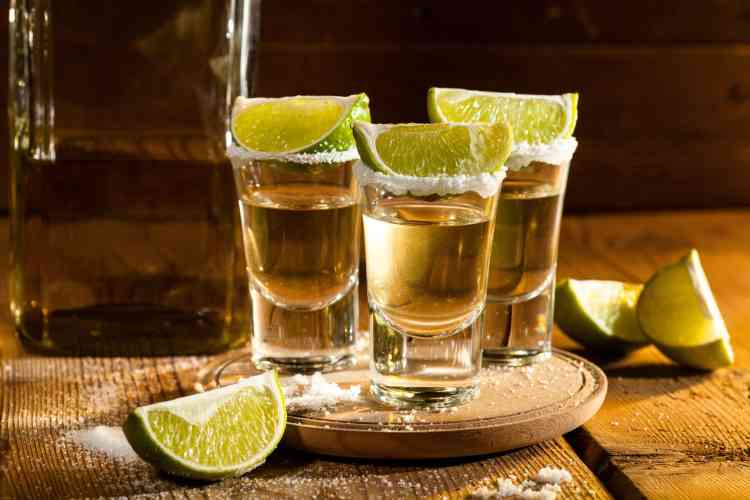
If you’ve perused the cocktail menu at a Mexican restaurant, you’ve probably wondered what the difference is between mezcal vs. tequila. Everyone knows about tequila. Tequila was a less commonly used liquor in the U.S. compared to vodka or gin until the early 2000s. It was the key ingredient in your margarita, and that was good enough. Then all of a sudden, the market exploded with tequila options, and they weren’t that familiar gold color anymore.
Then mezcal hit the scene. It sounds exotic, so you tried it. But could you tell the difference between mezcal vs. tequila? Probably not. These days when you look at the shelf behind a bar, it’s no longer dominated by bottles of expensive bourbon. Instead, there’s a prominent display that looks more like ceramic works of art than liquor. So maybe it’s time to understand mezcal vs. tequila and why they’ve both become so popular.
So what is mezcal? Is it the same thing as tequila? Which one is better? Which one has more alcohol content? Mezcal vs. tequila is a lesson worth learning, allowing you to be confident when deciphering a cocktail menu. And with the sheer diversity of mezcal vs. tequila options available, it’s important to understand the difference so that you know what’s worth spending the big bucks for and what’s not.
Jump to Section
- What Is Tequila?
- What Is Mezcal?
- Mezcal vs. Tequila
- Mezcal vs. Tequila Food Pairings
- Mezcal vs. Tequila Price and Availability
What Is Tequila?
Let’s start our lesson today on understanding the fundamentals of tequila. Mezcal vs. tequila isn’t a difficult concept to grasp, and you’ll impress your friends by being the one who knows the difference next time you gather at the local cantina for happy hour.
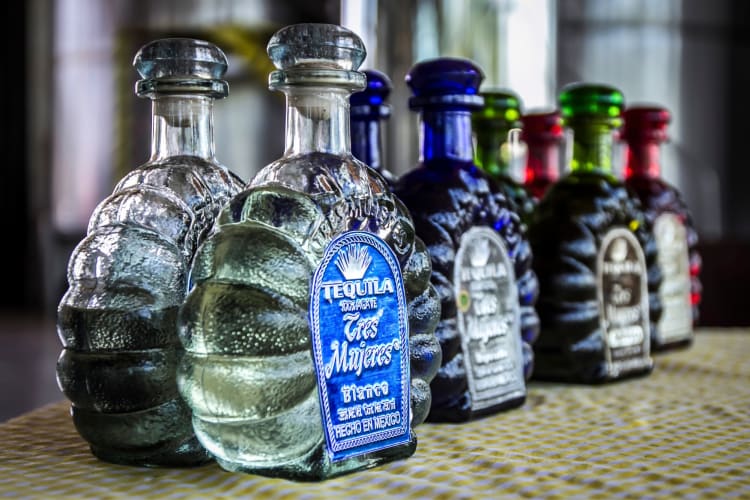
What Is Tequila Made From?
Tequila is made from the agave plant. More specifically, tequila is a liquor made from the piña (core) of the blue agave plant. It’s regulated, so by law, the liquor must contain at least 51% blue (Weber) agave to be labeled as tequila. It’s that simple. A good bottle of tequila is considered a key part of your home bar essentials.
Agave is a gorgeous bluish-green plant that looks similar to a large aloe plant. It’s slow-growing and found throughout the southwestern deserts of the United States and Mexico. Mezcal is also made from the agave plant, so that is the first similarity when understanding mezcal vs. tequila.
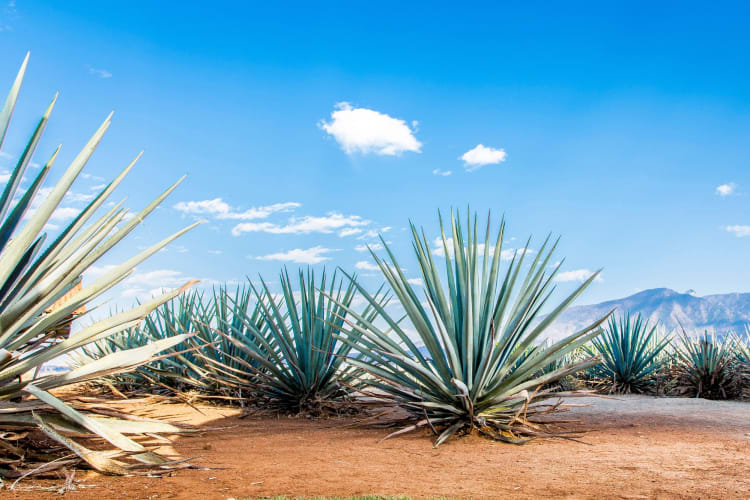
What Does Tequila Taste Like?
Tequila is made by cooking, shredding and fermenting the core of the blue agave plant. It’s a fairly straightforward process that results in an earthy liquor with a sharp edge, though some tequila is now barrel-aged to curb that edge.
But like the grapes that make your favorite wine, terroir (the earth where the plant is grown) can affect the final product. That means tequila flavor can vary widely and may lean toward spicy or even fruity. When comparing mezcal vs. tequila taste, tequila is the milder of the two.
There are a few different categories of tequila that tell you how long the product was aged. The categories in order from least to most-aged are:
- Blanco
- Reposado
- Añejo
- Extra Añejo
- Cristalino
Blanco tequila is sometimes also labeled as silver or plata tequila. It is aged less than two months but is often bottled immediately after distillation. Blanco tequila represents the most “agave forward” form of the liquor. This is a great choice for your late afternoon margarita like a pineapple margarita using blanco tequila.
Reposado, añejo and extra añejo are aged forms of tequila. The older they are, the darker the color. Cristalino is not an officially recognized variety of tequila and is somewhat new to the market. Don Julio tequila is considered cristalino, which means it was filtered through charcoal to remove the color and temper the flavor.
You can enjoy tequila neat, on the rocks or in a variety of delicious cocktails. To improve your use of tequila (or mezcal) in mixed drinks and cocktails, consider taking fun and informative online mixology classes.
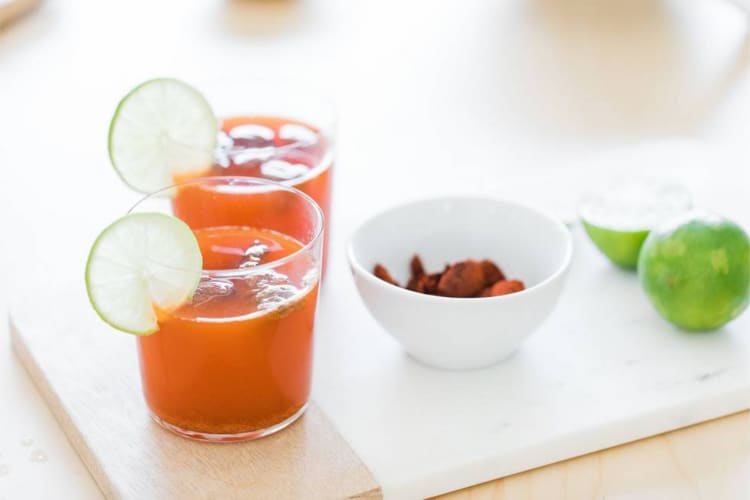
Where Does Tequila Come From?
Where is tequila from? When examining mezcal vs. tequila, the region of origin is part of the story. Blue agave comes from several distinct regions of Mexico (Jalisco, Guanajuato, Michoacán, Nayarit, and Tamaulipas) which are mostly on the western coast of the country.
What Is Reposado Tequila?
Reposado translates to “rest” in Spanish, so it makes sense that reposado tequila has been rested or aged. Reposado tequila spends two months to a year in either oak barrels or stainless steel. It is a more complex tequila than blanco but not as robust as añejo. If you’re comparing mezcal vs. tequila, reposado tequila is the closest thing to a traditional mezcal.
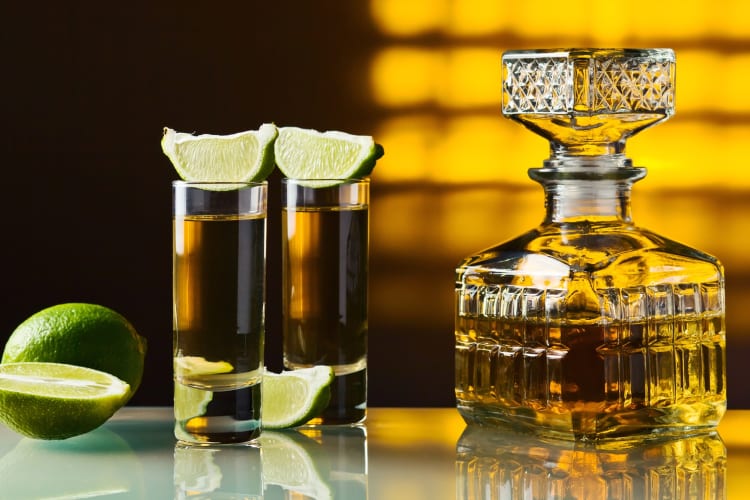
What Is Mezcal?
Now that you are an expert on tequila, let’s take a look at mezcal vs. tequila. Mezcal is a term used to describe any liquor made from the agave plant. Therefore, tequila is a type of mezcal. Tequila is made from blue agave, but there are more than 40 varieties of agave, thus many other types of mezcal.
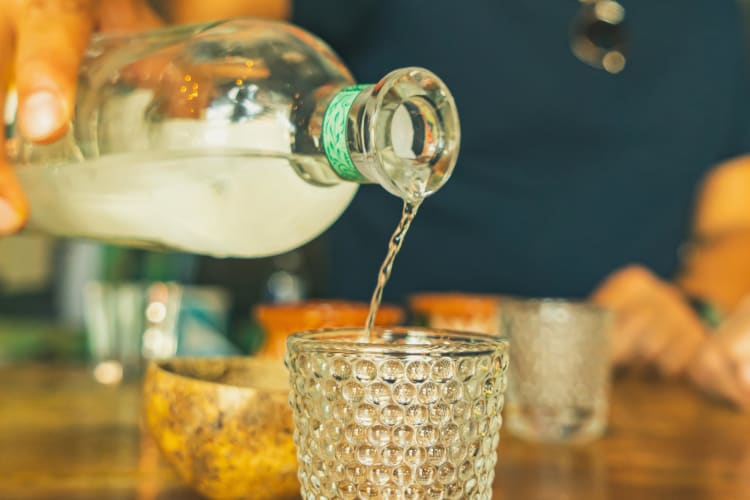
What Is Mezcal Made From?
When making mezcal vs. tequila, you start with the same part of the agave plant (the piña). While Mezcal also derives from the piña, the process used to extract the flavor is different.
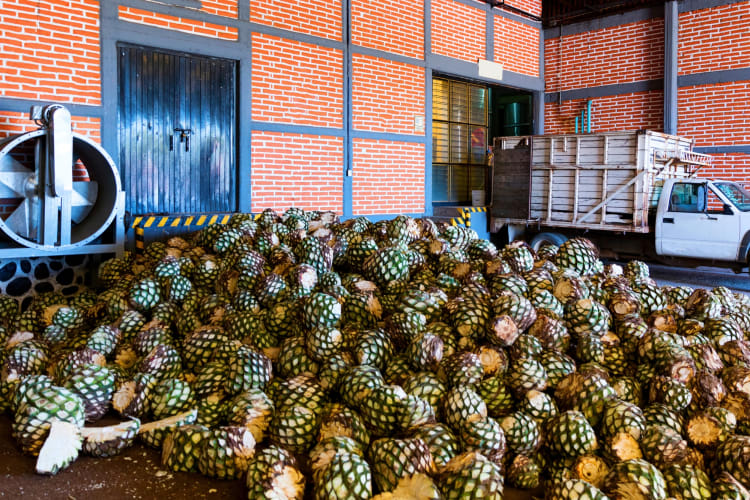
What Does Mezcal Taste Like?
Mezcal is produced by roasting the piña in a pit in the ground, which results in a smokier, more earthy flavor. It’s an ancient process considered to be more artisanal than tequila production. In other words, it’s a true art form and the artist (or mezcalero) can choose to include a variety of items in the roasting process that impact flavor.
Because there are differences in mezcal vs. tequila taste profiles, they are often used together in the same cocktail for complexity. This spicy margarita recipe highlights the use of both.
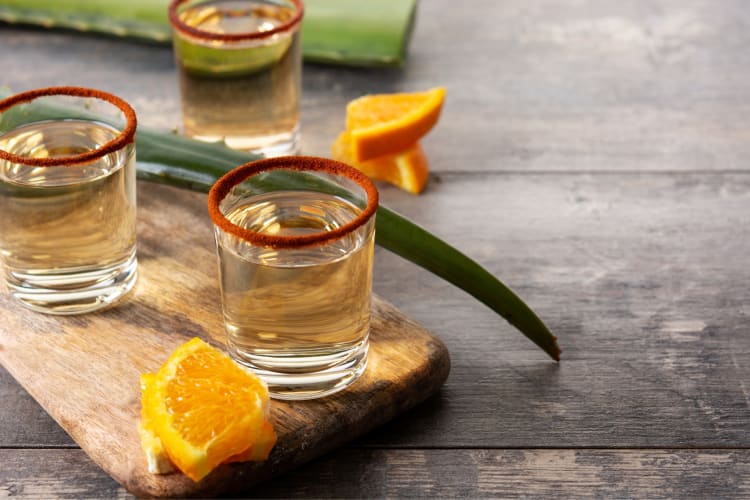
Where is Mezcal From?
If tequila is from the western regions of Mexico, where is mezcal from? The agave plants that are used to make mezcal vs. tequila come from the regions of Durango, Guanajuato, Guerrero, Michoacán, Oaxaca, Puebla, San Luis Potosí, Tamaulipas and Zacatecas.
When it comes to labeling of mezcal vs. tequila, both are categorized by aging. Mezcal is labeled as joven instead of blanco for the least aged version but also uses reposado and añejo for more aged products.
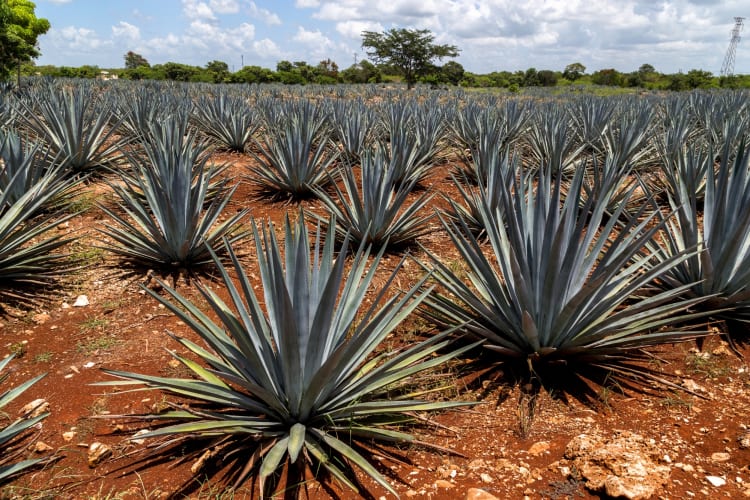
Mezcal vs. Tequila
So far there are more similarities than differences in mezcal vs. tequila. Let’s take a closer look at what differentiates each product, to answer the question: “What is the difference between mezcal and tequila?”
Mezcal vs. Tequila Taste
It’s hard to describe the subtle difference between tequila vs. mezcal taste. In general, mezcal will be more smoky or savory because of how it is produced. That said, with 40 different varieties of agave plants and the influence that individual mezcaleros can bring to the process, there is no true definition of what mezcal taste should be.
The liquor that results from the distillation of the agave plant is truly a blank canvas that can express almost any type of flavor depending on what is introduced. This is a real differentiator between agave-based products and beers or wine.
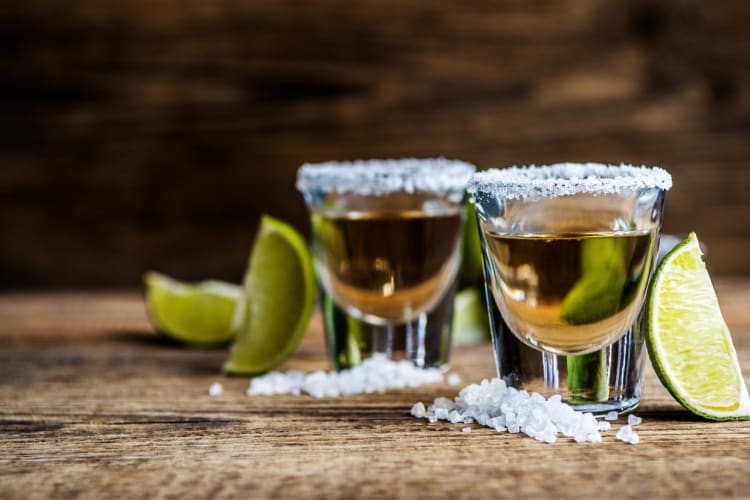
Mezcal vs. Tequila Alcohol Percentage
When it comes to mezcal vs. tequila alcohol percentage, both have enough punch to do the trick whether you’re sipping a cocktail or knocking back shots. In general, mezcal has a slightly higher ABV (40-55% vs. 35-55%). The reason mezcal is usually higher in alcohol content is because it is typically aged longer than tequila.
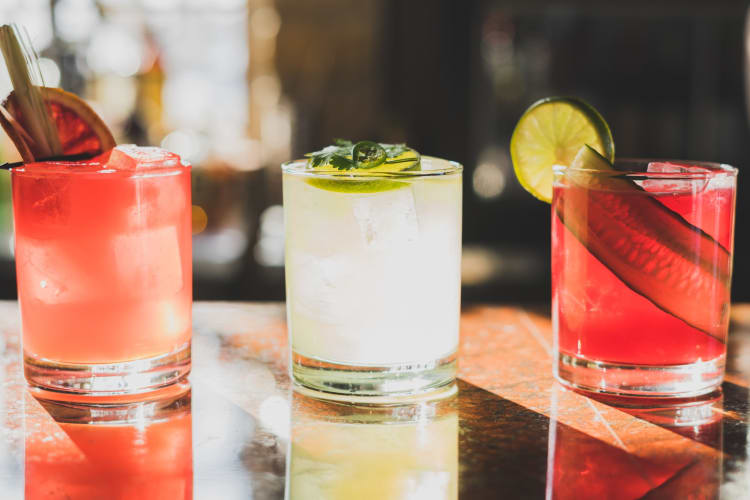
Mezcal vs. Tequila Distilling Process
In big-batch commercial production, tequila is now most commonly made by steaming the agave plant instead of roasting. Mezcal is always made by roasting, so you can expect a bolder, possibly smoky (but not always) flavor when drinking mezcal vs. tequila.
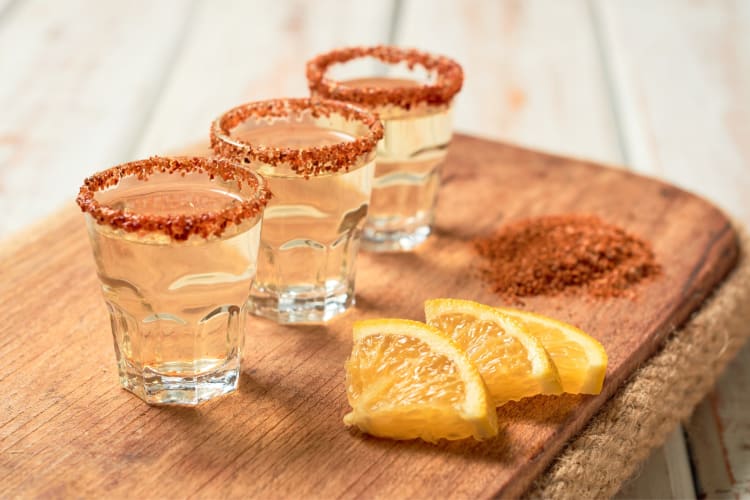
Mezcal vs. Tequila Food Pairings
Now that you know some of the differences between mezcal and tequila, you may be wondering: “What pairs well with tequila?” and “What pairs well with Mezcal?” Mezcal and tequila are both easily paired with Mexican or Southwestern dishes. Everyone knows there’s nothing like an icy-cold, salted-rim margarita with a big basket of tortilla chips and a bowl of salsa. But did you know that they both also pair well with fruits and cheeses?
Mezcal is a natural partner with smoked meats, so bring it to your next barbeque. Aged mezcal is a good option as an after-dinner drink with anything chocolate. On the flip side, both tequila and mezcal are a unique choice to pair with sushi if you’re not into sake.

Mezcal vs. Tequila Price and Availability
The last thing to know when comparing mezcal to tequila is the difference in costs and availability. What’s the cost difference between mezcal vs. tequila? How do I know which ones are worth the splurge? And where can you buy the liquor once you’ve decided which you want to try?
Price
As with most wines and liquors, age is the biggest factor that affects price. If you look at mezcal vs. tequila, both are comparable to vodka and rum for younger products, but prices increase quickly and sometimes dramatically when you look at the length of the aging process.
And similar to single-malt scotch, mezcal that comes from a single village will cost you more than those that do not. Small production mezcals, especially single village, can get exorbitantly expensive. Do your homework and don’t be fooled by fancy packaging! This is especially important if buying gifts for cocktail lovers, as those who mix tequila or mezcal drinks frequently will be able to tell a good bottle from one that simply has a nice label.
Tequila follows a similar pattern in that the more aged the product is, the more expensive it will be. You can typically find bottles of tequila ranging from $15 to $20 all the way up to thousands of dollars for the most high-end varieties.
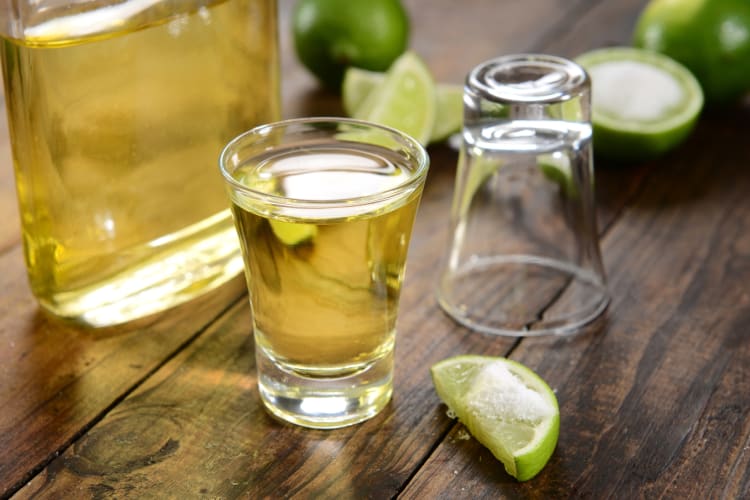
Availability in the United States
If you are a fan of agave-based liquor products, you can rejoice in the fact that both are widely available in the United States. You can find the spirits in most liquor stores as well as in many bars and restaurants.
There is some fear that mezcal will get to a point where production slows simply because the agave plant takes much longer to mature than the grapes, barley or wheat used in other alcoholic beverages. As producers scramble to take advantage of the surge in popularity, it’s unlikely that you won’t be able to find mezcal or tequila in your local watering hole. Still, it could become more expensive if there is a shortage of agave.

There was a time when the word tequila conjured up images of rugged, sun-burnt cowboys chugging bottles of the intimating gold liquor for the bragging rights of swallowing the worm. But those days are over. Mezcal and tequila are as ubiquitous in bars and restaurants as beer and wine. Differentiating mezcal vs. tequila is akin to understanding bourbon vs. whiskey and whiskey vs. scotch. The best part of the education is the experience of tasting along the way.
For even more ways to explore your favorite foods, check out other experiences happening on Cozymeal.




FOOD FOR THOUGHT?
Join the conversation.